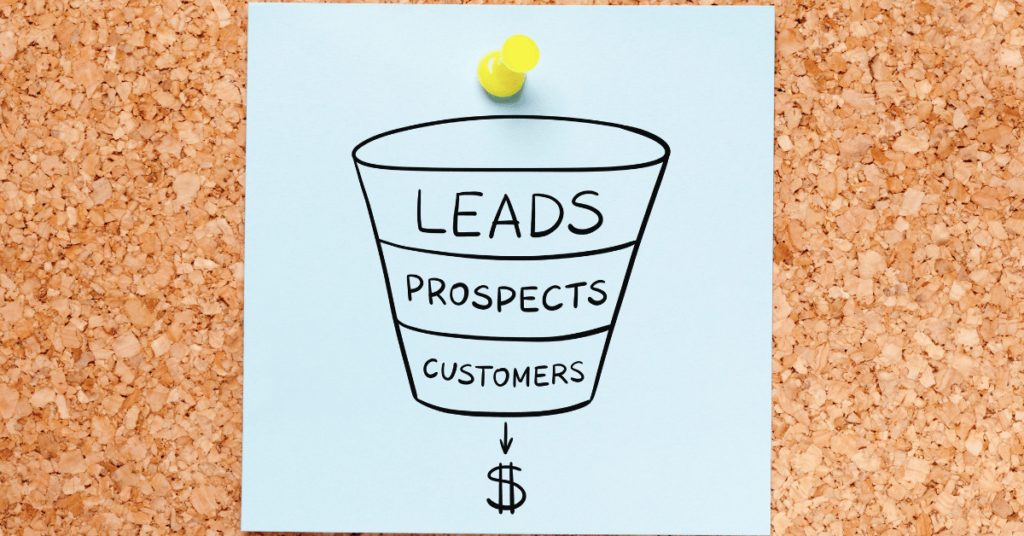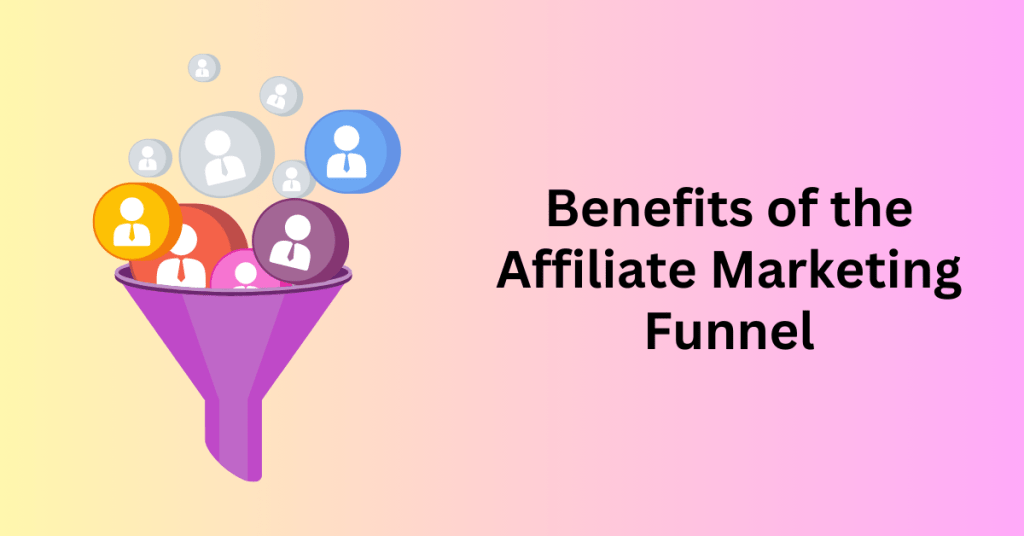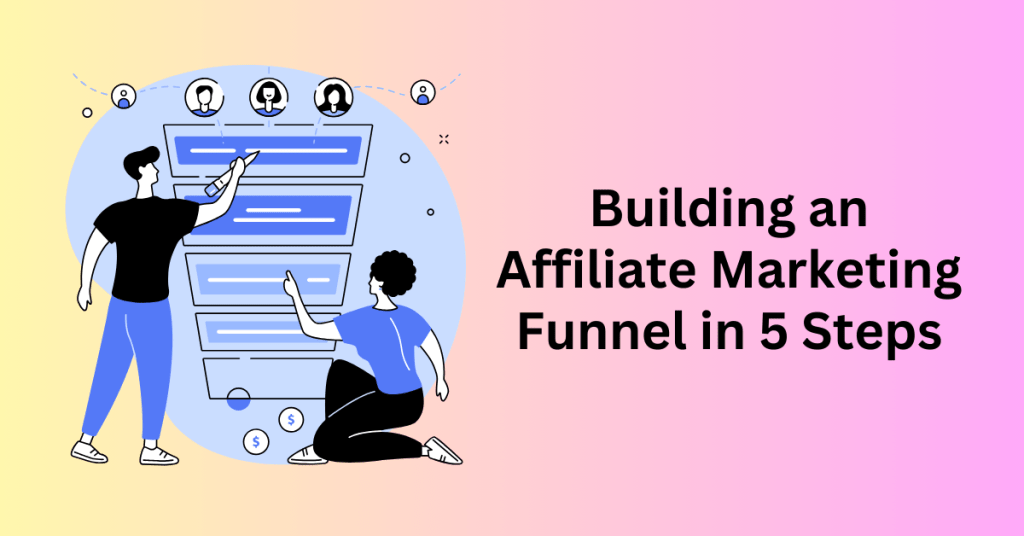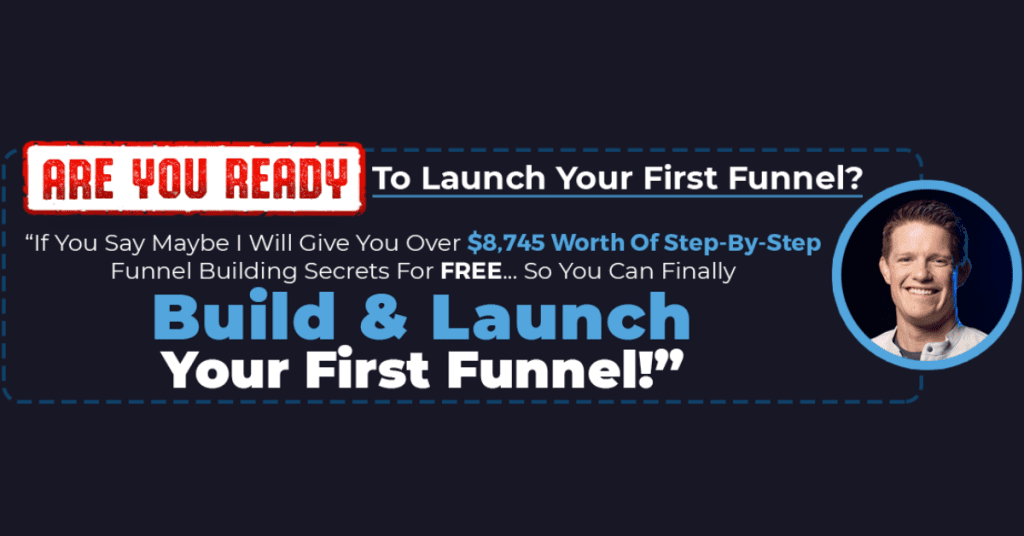Affiliate marketing has emerged as a dynamic and profitable avenue for entrepreneurs, bloggers, and digital marketers seeking to monetize their online presence. However, success in the world of affiliate marketing doesn’t happen by chance. Instead, it’s the result of strategic planning and the careful construction of a high-converting affiliate marketing funnel. If you’re eager to transform your affiliate endeavours into a lucrative income stream, then you’ve come to the right place.
In this blog, we’ll be your guide on a journey into the realm of affiliate marketing funnels, revealing the secrets to creating a high-converting funnel that will captivate your audience, boost your commissions, and elevate your affiliate marketing game.
Whether you’re a seasoned affiliate marketer looking to refine your strategy or a newcomer eager to embark on this digital adventure, we’ll uncover the essential steps and strategies needed to build a powerful affiliate marketing funnel that drives conversions and maximizes your earnings. So, let’s dive in and learn how to craft a funnel that not only resonates with your target audience but also turns clicks into cash, step by step.
Start Building Your First Affiliate Marketing Funnel with GetResponse
What is an Affiliate Marketing Funnel?

An affiliate marketing funnel is a strategic process that guides potential customers through a series of stages with the ultimate goal of turning them into paying customers. In addition, it’s essentially a path that prospects follow, moving from being unaware of a product or service to becoming a satisfied customer.
The primary purpose of an affiliate marketing funnel is to nurture leads, build trust, and convert them into buyers.
The AIDA Model for Marketing Funnel

The AIDA model is a classic framework used in marketing and advertising. Besides, it’s a valuable tool for structuring an affiliate marketing funnel. AIDA stands for Attention, Interest, Desire, and Action. Now, let’s break down each stage of the AIDA model in the context of affiliate marketing.
Attention
The first step in any marketing funnel is to grab the attention of potential customers. In the affiliate marketing world, this often starts with you using various channels, such as social media, blogs, or email marketing, to draw people into your sales funnel.
Attention can be generated through compelling headlines, eye-catching graphics, or enticing offers. Here, you need to understand your target audience and create content that speaks to their needs and interests. This phase is about making a memorable first impression and piquing curiosity.
Interest
Once you have the audience’s attention, it’s time to foster their interest. You will then need to provide valuable information, engaging content, and solutions to their problems. The content can include blog posts, videos, webinars, or product reviews. And the goal is to build a connection with your audience and establish yourself as a trusted source.
You should also introduce the product or service they are promoting and highlight its unique selling points. By addressing pain points and offering solutions, you can keep the audience engaged and interested.
Desire
After gaining the audience’s interest, the next step is to stoke their desire. This is where you emphasize the benefits and value of the product or service. You can also use persuasive language and compelling stories to make the audience see how the product can improve their lives.
You can use techniques like testimonials, case studies, and comparison charts to illustrate the advantages of the product you are promoting. The goal is to create a sense of need and urgency, so potential customers are motivated to take action.
Action
Finally, the final stage of the AIDA model is action. This is where you encourage your audience to take the desired action, which usually involves making a purchase. At this stage, you can then include clear and enticing calls to action (CTAs) in your content, guiding visitors to the product’s sales page or checkout.
To further sweeten the deal, you need to offer bonuses, discounts, or limited-time offers to incentivise the audience to make a purchase. These are the additional bonuses that they will only be getting if they buy from your link.
It’s essential to make the action step as easy and straightforward as possible. This will then ensure a smooth transition from interest and desire to conversion.
Start Building Your First Affiliate Marketing Funnel with GetResponse
Benefits of the Affiliate Marketing Funnel

There are numerous advantages to using an affiliate marketing funnel to boost your affiliate marketing efforts.
1. Enhanced Conversion Rates
One of the primary benefits of implementing an affiliate marketing funnel is the significant increase in conversion rates it can deliver. By structuring your marketing efforts into a well-defined funnel, you guide your potential customers through a series of carefully crafted steps, nurturing their interest and trust along the way.
This not only makes the sales process more efficient but also results in a higher conversion rate. The funnel allows you to segment your audience and tailor your content and offers to their specific needs and interests. By addressing their pain points and providing relevant solutions, you build stronger connections with your audience, which ultimately leads to more conversions.
2. Improved Tracking and Analytics
An affiliate marketing funnel provides an excellent framework for tracking and analyzing your marketing efforts. By breaking down the customer journey into distinct stages, you can monitor the performance of each step, identifying bottlenecks or areas that need improvement. This level of insight is crucial for optimizing your campaigns and making data-driven decisions.
You can track the source of your traffic, monitor the drop-off rates at different stages of the funnel, and determine which affiliates are driving the most valuable leads. This data empowers you to refine your strategy, allocate resources more effectively, and focus your efforts on what’s working, ultimately boosting your ROI.
3. Better Affiliate Partner Relationships
Another advantage of the affiliate marketing funnel is its ability to foster stronger relationships with your affiliate partners. By providing your partners with valuable resources and tools to assist them in promoting your products or services, you not only incentivize them to work harder but also help them become more effective marketers.
This collaboration can lead to more dedicated and motivated affiliates who are invested in your success. Additionally, a well-structured funnel makes it easier for your partners to understand the customer journey and target their efforts accordingly, resulting in better conversion rates and increased earnings for both parties.
4. Automated Email Marketing
Email marketing is a cornerstone of any successful affiliate marketing strategy. The marketing funnel can be a perfect conduit for this. Once a prospect enters your funnel, you can set up automated email sequences that nurture and engage them over time.
These emails can provide valuable content, offer product recommendations, and address objections or concerns that might be preventing a purchase. Automated emails are a highly effective way to keep your brand top of mind and encourage conversions, all while saving you time and effort in the long run.
5. Scalability and Growth
Affiliate marketing funnels are highly scalable. As you refine and optimize your funnel, you can attract more affiliates and drive larger volumes of traffic through it. With each stage of the funnel working seamlessly, you can handle a growing number of leads and customers without a significant increase in your workload.
This scalability allows you to reach a broader audience, generate more revenue, and potentially expand your affiliate program to new markets or niches, fueling your business’s growth.
Start Building Your First Affiliate Marketing Funnel with GetResponse
Building an Affiliate Marketing Funnel in 5 Steps

Creating a successful affiliate marketing funnel is a multi-step process that requires careful planning and attention to detail. Let’s delve deeper into each step for building an effective affiliate marketing funnel, with a focus on the nuances of implementation:
Step 1. Define Your Target Audience
Understanding your target audience is the cornerstone of any successful funnel. To achieve this, you should start by conducting comprehensive market research and defining a detailed buyer persona.
You should have a deep understanding of your ideal customer’s demographics, interests, pain points, and online behaviour. This information will guide your content creation and product selection, ensuring that you’re catering to the specific needs and preferences of your audience.
Additionally, it’s essential to segment your audience based on their characteristics and behaviours, as this will allow you to tailor your funnel to different groups. People from different groups and backgrounds will require different kinds of language and messages to convert them.
We basically categorize them into three different groups:
Cold audience: These groups of people usually have a problem to solve, but are not aware of what solution is available out there. They are searching in general for the solution to the problem they face. For these people, you will need to use layman’s terms in your sales copy to educate and convert them.
Warm audience: These groups of people know the problem and solution, but do not know which to choose. For these people, you will need to tell them the benefits of the product and help them to make comparisons to get the best solution for their problems. And of course, the solution you give will be the affiliate product that you are promoting.
Hot audience: These groups of audiences are the easiest to convert. They already know the problem, the solution and maybe even the product that you are promoting. However, they just need a push for them to take action and complete the purchase. It can be your special bonuses or bundles that give them the push to complete the purchase.
Step 2. Choose the Right Affiliate Products
Then, selecting the appropriate affiliate products is a crucial step that requires careful consideration. You also need to start by researching affiliate programs and evaluating their terms, commission structures, and reputation.
The most important factor is product relevance. You need to ensure that the products or services you promote align closely with the interests and needs of your audience. Your reputation as an affiliate marketer hinges on the quality and relevance of the products you endorse. You will see the best result when you know the product, used it before. This is because, then only you can provide genuine recommendations and help for your customers.
Step 3. Create High-Quality Content
Your content or sales copy plays a pivotal role in guiding your audience through the funnel. To create high-quality content, focus on the following aspects:
- Relevance: Ensure that your content directly addresses the problems, questions, or desires of your target audience.
- Engagement: Use a variety of content formats, such as blog posts, videos, infographics, and podcasts, to keep your audience engaged.
- Value: Provide valuable and actionable information in your content. Help your audience learn something new or solve a problem.
- SEO Optimization: Optimize your content for search engines to attract organic traffic. Use relevant keywords and follow best SEO practices.
Your content should guide your audience through each stage of the funnel, from awareness to conversion. At each stage, the content should align with the prospect’s current level of interest and knowledge.
Step 4. Build Landing Pages and Opt-In Forms
Next, landing pages are the gateways to your funnel. They should be designed with the utmost precision to persuade visitors to take a specific action. Whether it’s subscribing to your email list, downloading a lead magnet, or making a purchase, you need to define a clear goal for each funnel built.
A well-optimized landing page should include the following elements:
- Compelling Headline: Grab the visitor’s attention with a clear and compelling headline.
- Concise Copy: Provide concise, benefit-driven information about what the visitor will gain by taking the desired action.
- Eye-Catching Visuals: Use relevant images, videos, or graphics to enhance the page’s visual appeal.
- Call to Action (CTA): Include a prominent CTA button with persuasive text to prompt action.
- Opt-In Forms: Strategically place opt-in forms on the landing page to collect visitor information.
It’s important to create dedicated landing pages for different stages of your funnel to ensure that the messaging and actions align with the prospect’s progress.
Also, when you are sending emails out to your list, you want to send them to different landing pages based on their reactions to your emails. For people who have not opened your email, read your email, or clicked on a link on your email, they should be getting a different landing page.
Step 5. Implement Email Marketing Sequences
Email marketing is the engine that drives your affiliate marketing funnel. Once you’ve collected email addresses through your opt-in forms, it’s time to implement automated email sequences that nurture your leads and guide them toward conversion.
You can create a 5-day welcome email sequence in general to introduce you and your business. Also, share what they can expect from your upcoming email. Never try to sell them something in the first email. This will lead to people quitting your email list.
To create effective email sequences, consider the following:
- Segmentation: Segment your email list based on factors such as behaviour, demographics, and interests. This allows you to send highly relevant content and offers.
- Content Strategy: Plan your email content strategically. Use a combination of educational content, product recommendations, social proof (testimonials and reviews), and scarcity-based offers to encourage conversions.
- Personalization: Personalize your emails with the recipient’s name and tailored content. Personalization can significantly improve open and click-through rates.
- Automation: Automate your email sequences to deliver messages at the right times, such as welcome emails, follow-ups, and abandoned cart reminders.
Constantly monitor the performance of your email sequences and make data-driven adjustments to improve engagement and conversion rates.
Start Building Your First Affiliate Marketing Funnel with GetResponse
Final Thoughts – How to Build a High-converting Affiliate Marketing Funnel
In the dynamic world of affiliate marketing, the construction of a high-converting affiliate marketing funnel is your secret weapon. This funnel, meticulously designed to guide prospects from curiosity to conversion, holds the potential to transform your affiliate marketing efforts into a source of steady income. By now, you’ve learned the essential steps and strategies for building a funnel that captivates your audience and maximizes your earnings.
As you embark on your affiliate marketing journey, remember that building an effective funnel is a dynamic process. Stay attuned to the needs and preferences of your audience, continually refine your strategy, and leverage data-driven insights to optimize your funnel’s performance. By doing so, you’ll be well on your way to mastering the art of affiliate marketing and harnessing its full potential.
So, don’t wait any longer; put your newfound knowledge into action. Start crafting your high-converting affiliate marketing funnel today and watch as it takes your affiliate endeavours to new heights. Your success in the affiliate marketing world awaits – happy funnel building!
Start Building Your First Affiliate Marketing Funnel with GetResponse





